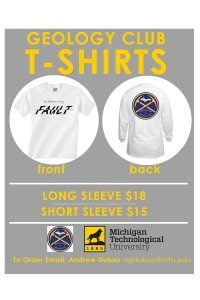
James DeGraff (GMES/GLRC) is the principal investigator on a project that has received a $27,500 research and development contract from the US Geological Survey. The project is “The Keweenaw Fault Geometry, Secondary Structures and Slip Kenematics Along the Bete Grise Bay Shoreline.”
This is a one-year project.








